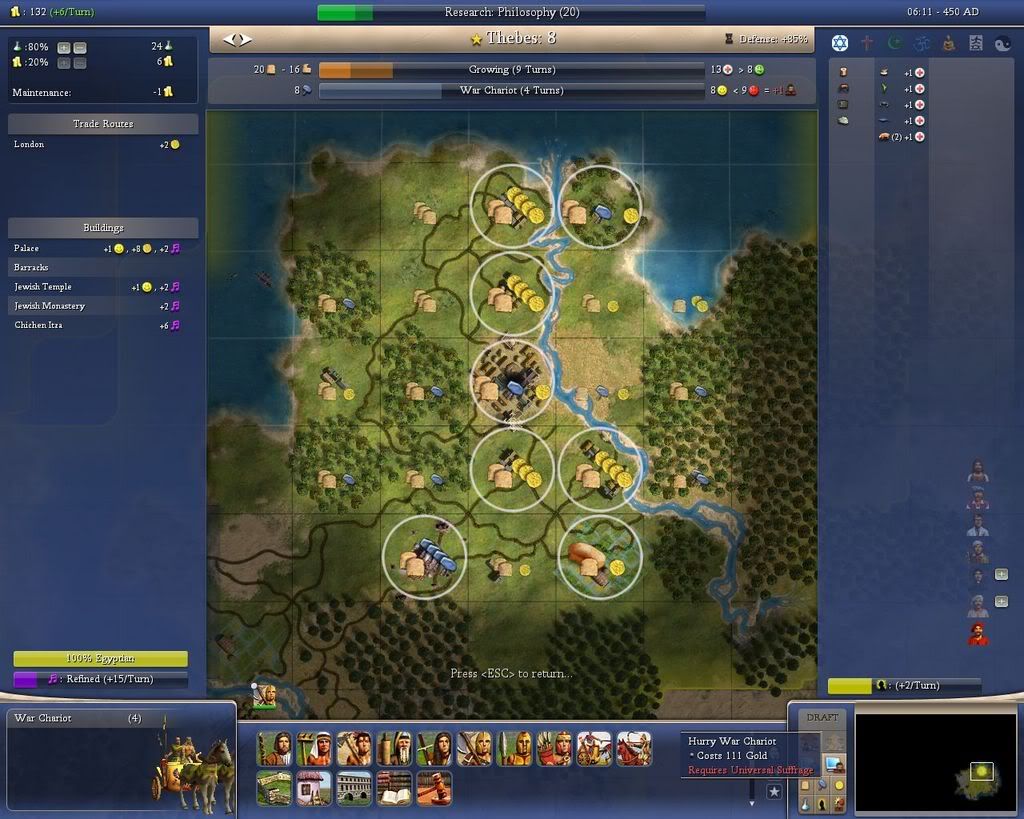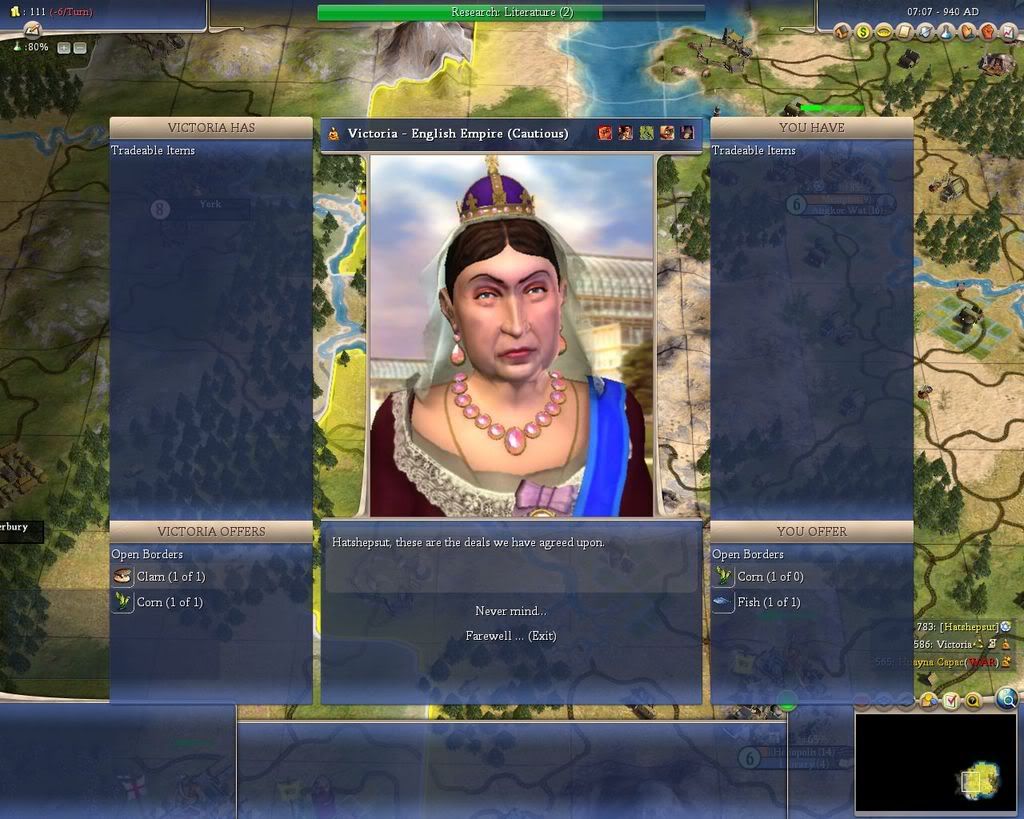Hi,
I have still not gotten over the threshold enough to be able to know what is going on all the time during a game at Noble so I took a few screenshots and hope that at least some of the things that are unclear to me could be answered in these forum.
1a) I thought I needed a road to connect to resources but here I get them without road. Is that because it is within my fat cross?

1b) If a resource tile within the fat cross is not worked by a citizen, do I still get it's bonus?
1c) Do I need to work tiles with citizens in the cityscreen in order for e.g. a cottage to be a useful improvement?
2a) In one of my first attempts to build a production powerhouse city I wanted to place a city on the 3-hammer tile to the southwest of the settler but the computer recommended the tile to the east. I guess the computer did not know I wanted a production powerhouse, but was I wrong to put it on the 3-hammer tile?

2b) Why would the computer favour the tile to the east?
3a) Why are there 9 unhappy workers when Thebes is only size eight?

3b) When I get an unhappy worker who think it is "too crowded," can I do anything other than i-poprush, ii-starve them, or iii-build happy face buildings or trade for a happy face?
4) Why does it say that I trade 1 corn of 0? Is this a bug, remember from above, I have corn in the fat cross of Thebes so I definitely have corn to trade?

I would be very glad if someone could clarify these things for me. Thanks a lot!
/p
I have still not gotten over the threshold enough to be able to know what is going on all the time during a game at Noble so I took a few screenshots and hope that at least some of the things that are unclear to me could be answered in these forum.
1a) I thought I needed a road to connect to resources but here I get them without road. Is that because it is within my fat cross?

1b) If a resource tile within the fat cross is not worked by a citizen, do I still get it's bonus?
1c) Do I need to work tiles with citizens in the cityscreen in order for e.g. a cottage to be a useful improvement?
2a) In one of my first attempts to build a production powerhouse city I wanted to place a city on the 3-hammer tile to the southwest of the settler but the computer recommended the tile to the east. I guess the computer did not know I wanted a production powerhouse, but was I wrong to put it on the 3-hammer tile?

2b) Why would the computer favour the tile to the east?
3a) Why are there 9 unhappy workers when Thebes is only size eight?

3b) When I get an unhappy worker who think it is "too crowded," can I do anything other than i-poprush, ii-starve them, or iii-build happy face buildings or trade for a happy face?
4) Why does it say that I trade 1 corn of 0? Is this a bug, remember from above, I have corn in the fat cross of Thebes so I definitely have corn to trade?

I would be very glad if someone could clarify these things for me. Thanks a lot!
/p



Comment